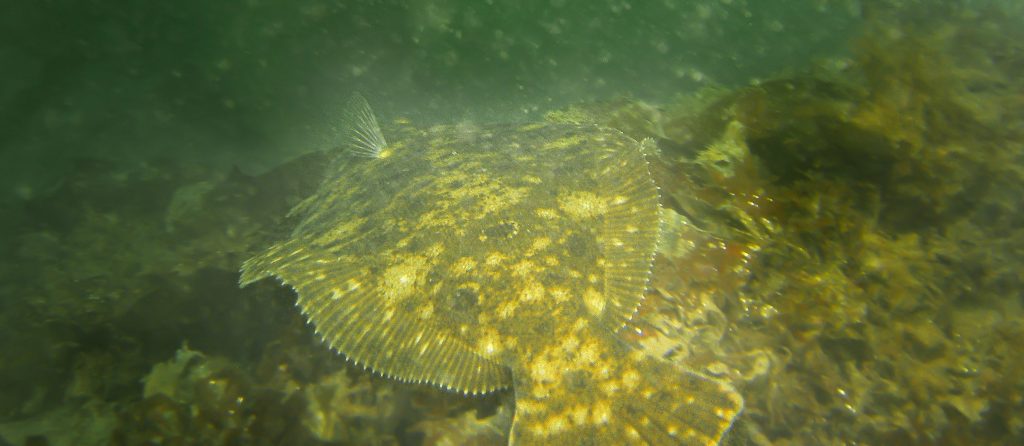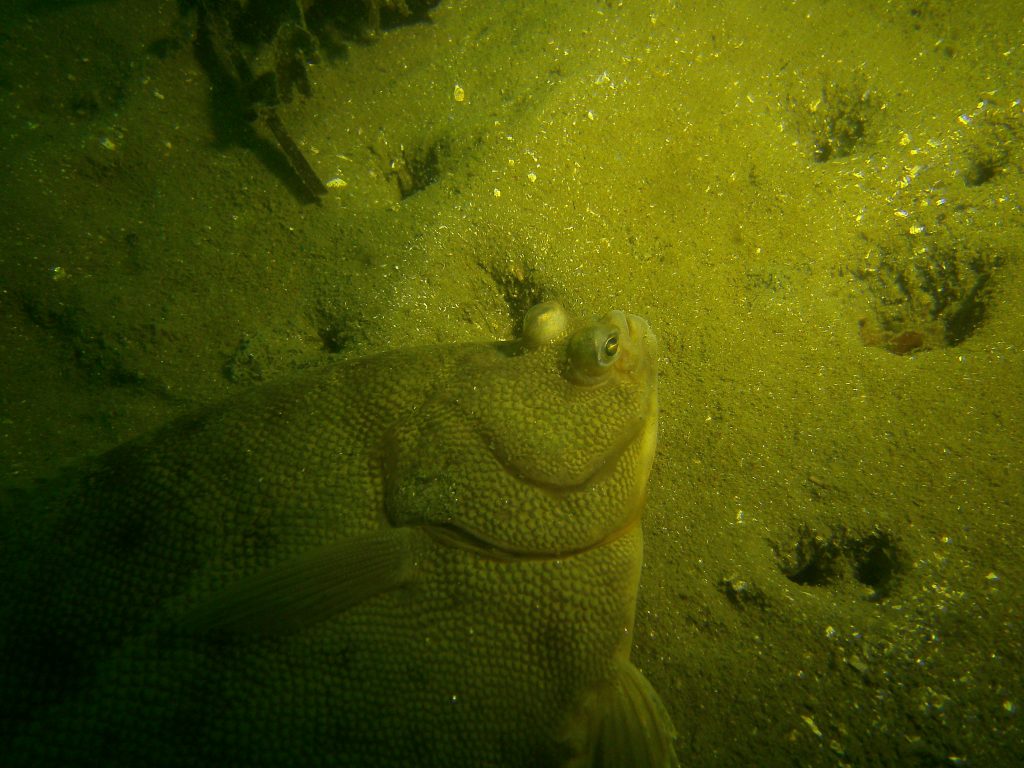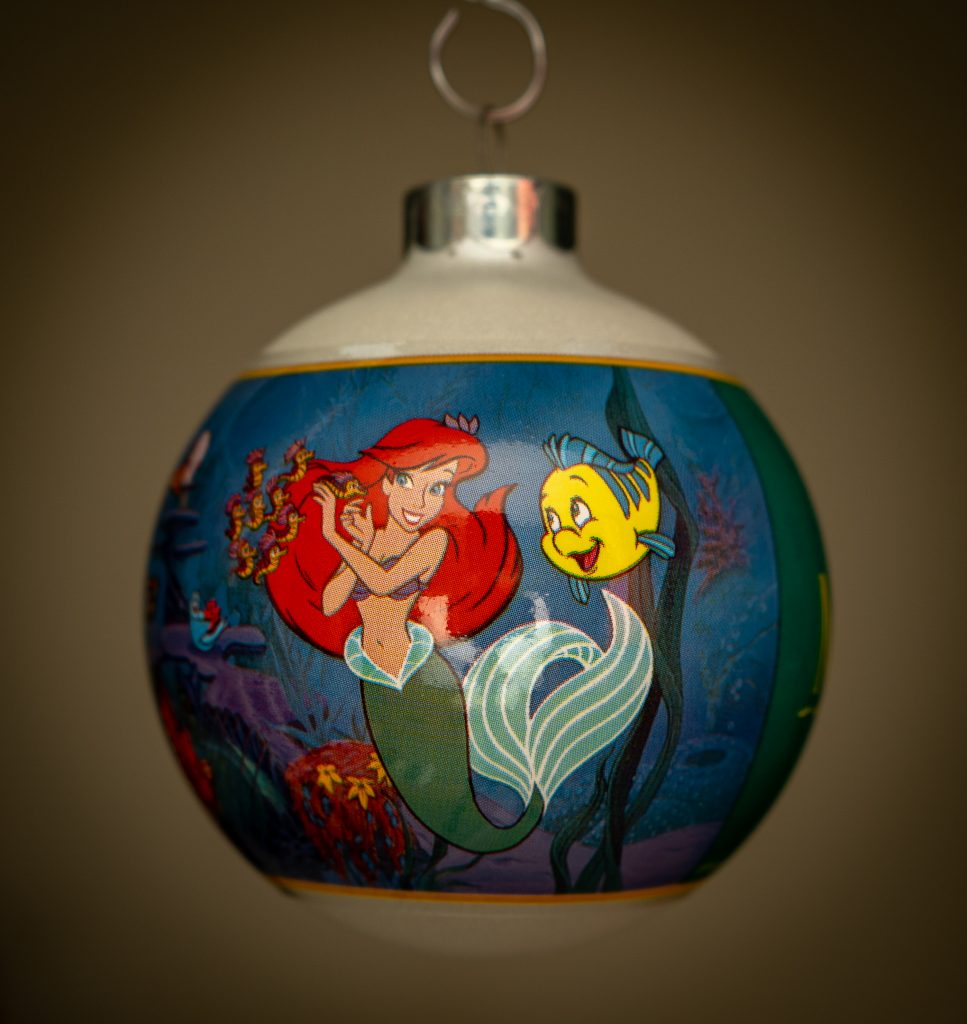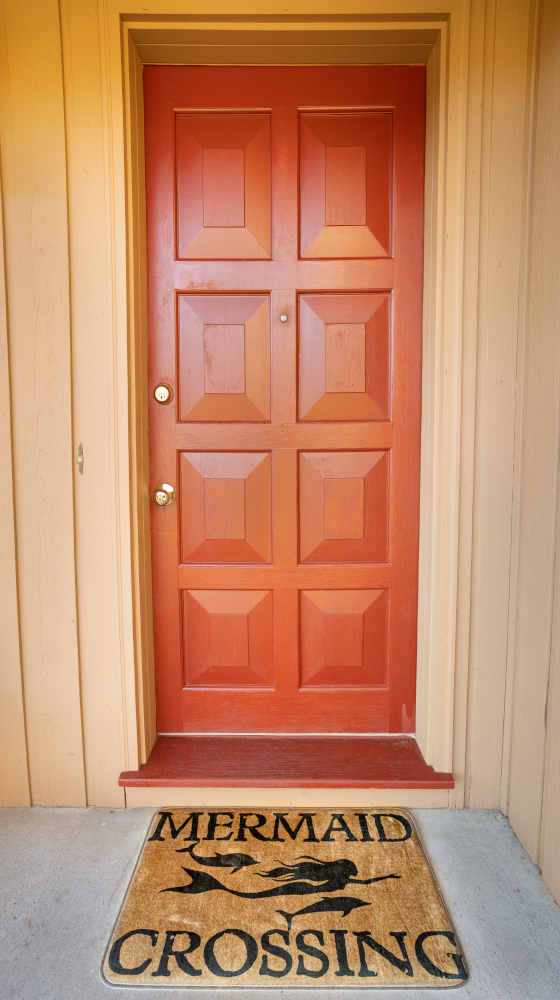New England Mermaid

It must be really weird. One day, you’re swimming around, upright like all the other fish. You are seeing things on both sides, can easily move to look in all directions, and then, poof, you’re lying down flat with both eyes on the same side of your head. Weird! Yet, such is the life of a flounder.
How does this happen? Let’s start at the beginning – here’s the sex part I promised you in my first blog. In the case of the local New England flounders, the male and female fish get together, do a little rather floppy swim-by date, release millions of their eggs and sperm, where they mix together in the water and fertilization occurs. Yup, that’s it … sex part over. The larvae hatch as free swimming little fishy-type globs that have one eye on each side of their heads and swim up-right. (Grammarian geek alert: remember when we learned that octopi is not the appropriate plural form of octopus? Today I learned that there are 2 acceptable versions of the plural for larva – larvas or larvae. I have chosen the latter because it just seems more fun and fancy.) As the larvae continue to develop, skull bones grow asymmetrically, and one eye shifts over the top of the head to the other side, creating a rather Picasso-esque type of face. Ooh – cool! Clearly, unless additional adaptations occur, our flounder friend would likely always swim in circles as well as be very easy prey to any predators approaching from the blind side. This would not be good. Having lived many years with a wonderful collie who was born with only one working eye, and therefore terrible peripheral vision, I can directly attest to the fact that such animals, while they can be wonderfully loving and adorable, will tend to travel in circles, as well as be particularly poor at frisbee catching, unless other adaptations are also acquired. Enter the flounder adaptation – The flounder adapts by spending life on its side, resting flat on or beneath the sand and swimming through the ocean with it’s eyes to the sky. My collie also enjoyed spending much of his time resting sideways, flat on the ground, but that is where the similarities end.
Back to our larvae. By the time the larvae metamorphose into juvenile flounders, they look like very mini versions of the adults. You can often find tiny thumb-print size baby flounder floundering around in the sands by the eel grass nurseries.
There are a few different species of flounder here in New England. The first challenge in identifying a flounder is that you need to be able to tell your left from your right. Are we all good with this? Yup? Hooray for us as we’ve mastered the first step. You see, (pun intended), each species has either both eyes on the left side or both eyes on the right side, if you picture it with the dorsal fin up. For some of us directionally impaired mer-folk, this can be quite a feat – first we have to orient ourselves to our flounder friend, then determine which side is up if our friend were to flip his/her body 90 degrees – super easy task for spatially-oriented engineer type mer-folk, but takes a little extra thinking for some of us. That’s okay – we’re underwater and we’re not in a rush.
The two most common types of flounder that live here are the summer flounder and winter flounder, named after the time of year (sort of) that we are most likely to see them closer to shore. The summer flounder spawn at sea in the fall and winter, the larvae are brought in towards shore by currents, and the flounder begin their lives near shore in the warmer months. These summer visitors metamorphose into left-eyed flat friends. The winter flounder spawn in shore during the fall and winter, (or late summer – they don’t have a calendar), and they become right-eyed flat friends. Other local flounder who are less frequently seen by mer-folk include the very thin window-pane (left-eyed) species.
Now that we are beginning to appreciate the uniqueness of the flounder, let’s learn something else unusual about our flat friends. They are great at camouflage. If us mer-folk were hanging out and playing with our flounder buddies, they would always win at hide-and-seek. Well, I suppose that’s debatable- they would be great hiders but not necessarily very good seekers. Not only can they hide completely under the sand with just their eyes visible, they can also change their coloring and patterns to blend in with their surroundings. They are full of color-producing cells called chromatophores (that’s my new word of the day). I can honestly say that I have never before used the word chromatophore in a sentence, and just like that, I’ve used it twice! Unlike our human or mermaid color-producing cells, chromatophores (now I’ve used it three times!) are used in camouflage. Basically, their brain and eyes interpret surrounding light and patterns, and their pigmentation changes to match. Cool, huh?
Let’s look at the flounder below. First, let’s identify our friend. Remember to think left and right. It helps to orient yourself and your new buddy by noticing the gill slit which would be low on the head of a regular fish. Yup – it is right-eyed. Knowing some other characteristics of the species, including a small mouth, relatively thick body, and very visible scales, we can be pretty certain that we are looking at a winter flounder. Knowing that this picture was
taken in September pretty much confirms our identification. Now, notice the coloring and pattern, and compare it to the sea floor. I’d say that there’s some pretty good camouflage going on here.

If camouflage is not enough, the flounder can hide beneath the sand. This flounder in the picture below has just the eyes showing and is doing a great job at hide and seek. I cannot be sure what type of flounder I am looking at, because so little is showing, but based on the little I can see, I think we are looking at a well-hidden summer flounder. Clearly, this flounder does not want to be seen, and certainly does not want to be disturbed, so I did not visit long.

I always enjoy visiting with flounder. When they go on some wanderings, they are very graceful and beautiful to watch. Also, they were one of the fish that inspired the blog title “Caudal Tales: From Behind the Fish.” I have a lot of pictures of them from behind (the top picture of this page being a prime example), because they do not like to hang out much with mer-folk, either hiding or swimming away. I try not to take it personally. I hope you appreciate the grace of the fish below as it swims away from us.
One final thought about flounder. The term “flounder” always reminds me of one of my favorite movie characters, but Flounder from The Little Mermaid is definitely not a flounder. They are both rather skittish, and they are both potential meals for sharks, but aside from that, they are quite different. For those who may not be familiar, or who need a refresher … Flounder is best friend to Princess Ariel, fellow mermaid to all of us mer-folk. We should all be familiar with this very famous fellow mermaid. Though it is rather confounding that she chose to want to spend more time on land while many of us would like to grow fins and spend more time underwater. Anyways, Flounder tags along with her on many adventures, trying to be brave, but is often scared. Sudden movements, especially when he knows that sharks are nearby, make him particularly nervous, especially as he can’t hide in the sand like a real flounder. I will confess to watching this movie again while I was writing this blog post – I wanted to re-familiarize myself with not only Flounder, but the entire Little Mermaid world, at least the Disney version of that world. This is serious research. Princess Ariel and Flounder, along with many of their fishy friends, are on one of my holiday ornaments, and the song “Under the Sea” from their movie played a significant role during my wedding reception … but I digress.
Wishing you all many wonderful adventures and caudal tales … until next time, remember: “Under the sea, under the sea. Darling it’s better, down where it’s wetter. Take it from me. Up on the shore they work all day. Out in the sun they slave away. While we devotin’ full time to floating under the sea” (words by Howard Ashman, sung by Sebastian the Crab (aka Samuel E. Wright).


4 Comments
Well I feel fully informed about flounder now. I hope there won’t be a test at some point though because my memory seems to founder! :) Keep writing. This was great.
Ha ha – my memory too – no quizzes!
I learned a lot, Deb, and enjoyed the humor with which you write!
Thank you so much Karen!